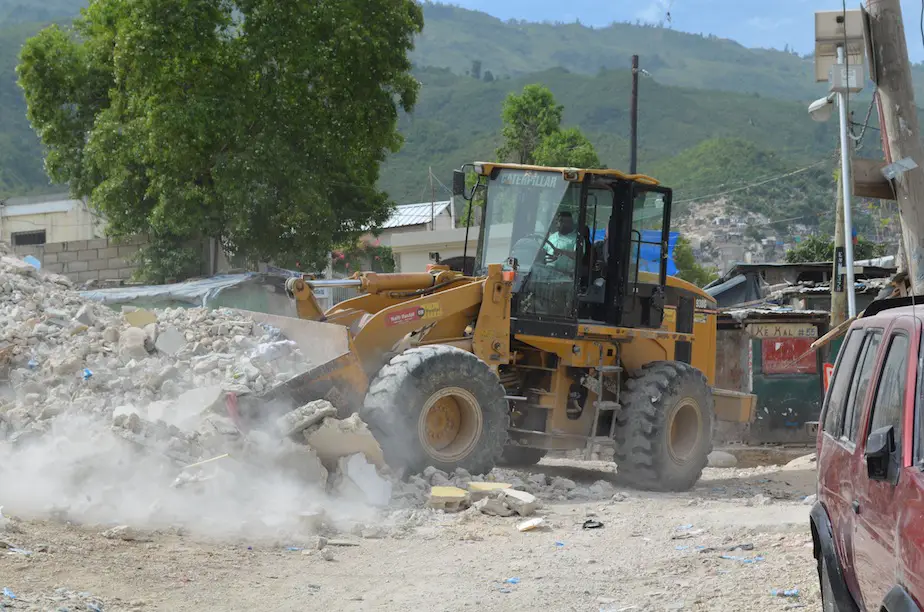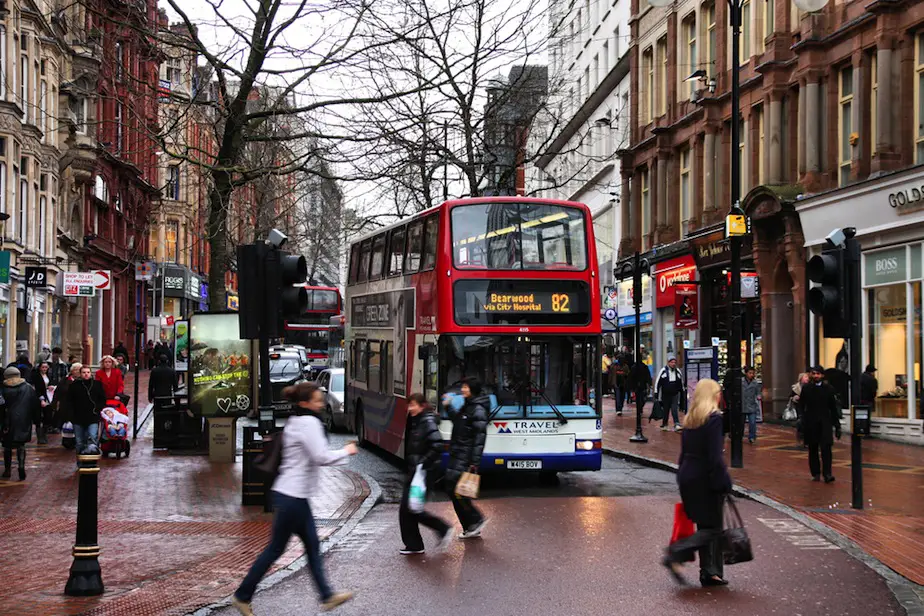It’s no secret: urbanists and city lovers worldwide have a soft spot for Detroit. For urbanists, Detroit is kind of like the fat kid in a Disney baseball movie: hard to look at, but sympathetic – someone you want to see hit a home run at the end of the movie, improbable though that may be. Here at This Big City, we’ve covered Detroit’s presence at the Placemaking Leadership Council. Elsewhere online, the popular blog Next City has issued a number of prognoses for the city, and the 2011 documentary Urbanized featured efforts to build community gardens in some of Detroit’s (many) vacant lots.
Urbanists are a lot less glowing about Los Angeles, a city which they look on with scorn, and when bad things happen there, schadenfreude. If Detroit is the fat kid in our baseball movie analogy, Los Angeles is like the rich, snobby kid who everyone expects to do well, but plays terribly. Movie analogies aside, Los Angeles may not have experienced the profound decline of Detroit, but few would argue that its overall history has been exactly rosy.
With July’s news of Detroit’s bankruptcy, it wasn’t just the small-but-passionate urban planning community that was up in arms, it was the entire US media. The Washington Post issued an op-ed astutely pointing out America’s lack of a coherent national urban policy. Renowned economist Joseph Stiglitz wrote a sort of rust belt lament, connecting the woes of Detroit with his native Gary, Indiana. Richard Florida, the editor of The Atlantic Cities, wrote a lengthy piece framing the issues of Detroit within his “Creative Class” theory.
These are all important analyses. But as an LA-area native – and more pertinently, a native of Long Beach, a city with little to do with Hollywood and a lot to do with the LA area’s notorious hoods south of downtown – I couldn’t help but find a few similarities between my home city and Detroit, as well as think of few projects undertaken in the LA area which (gasp!) have actually been successful, and might be something for Detroit to study.
Engines of Growth
First, let’s look at how the two cities developed. Detroit and LA have plenty of differences, yet an analysis of their growth patterns reveals a number of important similarities. They are rather different geographically; the geographic mould of Detroit, similar to Chicago, looks something like a dart board cut in half – a nucleus surrounded by concentric circles built on the edge of a body of water. This has little to do with LA’s erratic mix of mountains, flood plains, and coastline. But despite this, the development of physical space in both cities was carried out in roughly the same era: between 1903 and 1956. This time period is significant because it came after the invention of the private car but before the Interstate Highway System, and development undertaken at this time reflected a mixture of road projects and transit. This means that both places, despite their car dependent reputations, are actually surprisingly friendly to pedestrians; they both rank among the top 25 on Walkscore.com.

Common knowledge holds that Detroit’s main industry is cars and LA’s is movies. But the auto industry also played a large part in the development of LA, especially South LA neighborhoods such as Watts which grew up around tire and auto part factories, leading to a large blue-collar population in the area. Also, both areas grew up as large shipping and rail transportation hubs. These factors make Los Angeles much more susceptible to Detroit-style problems than other “sun belt” cities.
The Road to Ruin
The seismic shift that began to affect American industry was perhaps felt the hardest in Detroit and its neighboring cities. This decline has become famous, chronicled in films from Michael Moore’s 80s documentary Roger and Me to Clint Eastwood’s Gran Torino, to this viral video of a Cleveland resident boasting “at least we’re not Detroit.” Wikipedia has an entire page on “the decline of Detroit.” With the recent financial crisis, the city seems to have bottomed out. Deprived of most of its manufacturing base, the central city – where residents once flocked to share in the spoils of car generated industrialism – is now all but hollowed out, having lost over a million residents since 1950. While there are still pockets of prosperity in the urban area, none of that money seems to find its way into incorporated Detroit.
Today, unable to pay off its creditors on Wall Street, the city has filed for Chapter 9 bankruptcy. This is devastating news for workers on the city’s pension. It’s also the beginning of a vicious cycle; the city recently had to cancel plans for a light rail line, and further budgetary problems are bound to cancel more city projects, degrading urban space, which causes more people to leave and ultimately… further budgetary problems.
As Detroit’s auto industry felt the sting of outsourcing, so too did the manufacturing sector of South Los Angeles. Factory closures contributed to the epidemic of gang violence that took off in the 1970s, giving rise to the infamous Bloods and Crips. In the early 90s, the end of the Cold War, while a good thing for the future of humanity, put a damper on LA’s formerly booming contingent of defense contractors. Basically the only industry that was still in good shape was Hollywood, which ironically took a shine to making disaster movies set in LA. The bloodbath of the 1992 riots and the later Rampart police scandal stood as symbolic indicators that the City of Angels had become a living hell.
The Region Lends a Hand
The LA Area did still have one big economic advantage, however: its massive port complex. And civic leaders, adapting to the changing international climate, focused on building up that port. The former navy base in Long Beach was converted to handle commercial shipping, and in 2002 the Alameda Corridor cargo rail project boosted train capacity to the port. Within LA, restructuring of the police department helped to reduce corruption. In 2008, the region took a major step toward a better regional transportation system, when voters across Los Angeles County voted for Measure R, a plan to increase sales taxes to speed up the county’s transportation plan. Problems still remain, such as rampant homelessness and persistent unemployment – though that’s slowly getting better. But pollution is down, as is crime, and an expanded transit network means people have more options for travel without a car.
Detroit, perhaps more than any other city, can learn from this example of regional participation. While a comprehensive regional consolidation à la Paris is probably off the table, the city could try less daunting yet still useful regional plans. Measure R provides a good example of how a region can work together to meet a specific goal, in this case, an improved regional mass transit system beneficial to all. Of course, the question remains: what’s in it for the suburbs? But the social, economical, and environmental benefits, as pointed out in the Richard Florida article as well as another Atlantic Cities piece, mean that proponents of such a plan have a strong case to make.
Distant Dreams of a Green Future
Detroit’s current troubles do have a silver lining. Low living costs have enabled big thinkers to pull off plans that would be impossible in pricier areas. One adventurous young entrepreneur has started his own bus line in the wake of the cancelled light rail line, featuring buses panted with hip underground paint jobs. Ultimately Detroit may not return to its glory days, but this new pioneering spirit may yet turn into a city-wide movement, creating a dynamic, if much smaller, new metropolis. Of course, hard realities still remain, but at least there’s a population that seems dedicated to address them.
One way they may choose to do so comes in the form of a unique plan proposed in the Landscape Urbanism Journal. The plan calls to convert abandoned land into a series of green belts, as well as “blue corridors” for storm water runoff. Appropriately enough, this plan bears a strange similarity to a failed plan in Los Angeles by Frederick Law Olmsted to build a massive network of linear parks throughout the region. This means that in addition to copying the successes of its distant west coast counterpart, Detroit may one day be able to do LA one better, succeeding where the City of Angels failed in building a network of green. While this opportunity may not be complete consolation for a city currently in crisis, it does offer a glimmer of hope, and something for the city’s current crop of big thinkers to set their sights on.
Drew Reed is an online media producer and community activist specialising in sustainable transportation. He lives in Buenos Aires.
Photo: Bob Jagendorf


